Greetings!
Whilst the real world has seen me exploring the French capital lately, in cyberspace this week’s posting is all about the German one. In our offering today, Mike and I explore the delights of Berlin, perhaps not the prettiest city on earth but definitely one of the most interesting. This visit however, was not my first: aside from a brief pass through in 2003, I spent an amazing three days there in 2007, the account of which can be found here and which is, incidentally, the most visited post on Uncle Travelling Matt. So check that out as well as my two V-logs of this trip.
Keep travelling!
Uncle Travelling Matt
Links to all parts of this travelogue
And also check out my 2007 Berlin travelogue!
DAY 2
The next morning we breakfasted German-style on pastry and coffee and then took the train back into the centre of the city. This visit to the German capital was to be a bit of a whistle-stop tour as our train to Poland was scheduled to leave late in the afternoon but that didn't bother me particularly as I had pretty much blitzed – pun intended – the city back in 2007. There was however, one sight that I still wanted to see and so we headed for Alexanderplatz, once the heart of East Berlin.
Alexanderplatz had changed in the intervening six and a half years since my previous visit. Back then it had been a vast, grey, dismal, windswept and rain-drenched plaza of astonishing dreariness, topped off by a feature clock that would struggle to look good in Milton Keynes. Now, whilst perhaps not one of the continent's more memorable urban spaces, it was cheerier, brighter, busier and the sun was shining. Only the clock remained to remind me of past awfulness. It was still crap.
But we hadn't alighted at Alexanderplatz to admire the concrete, but instead I wanted to check out the one place that I hadn't managed to fit in on my 2007 city tour. The Fernsehturm (TV tower) is, at 365m high, the second tallest structure in Europe and a well-known symbol of the city. It was East Germany's proud boast of its modernity to the West, (from where it was clearly visible), but the gesture backfired since the sunlight reflected on the panels at the top to form a cross. The locals dubbed it “The Pope's Revenge”. Proud proletarian statement it may have been, but I was dismayed to see the entry price of €13, something that this old prole could not afford. So, after mooching round the shop in its base, Mike and I left that Berlin box unticked and continued on our way.
I decided to take Mike on a walking tour of some of the highlights of the capital which was all new to him, so we headed down past the Marienkirche and impressive Rotes Rathaus to the wonderfully East German Marx-Engels Forum where sits one of my favourite statues in the whole world. I say that because not only does it feature the two granddaddies of the Left, but they are arranged in such a way – Engels standing on the right, then Marx sitting – that it seems designed for a third to join them – you! - and if you do stand by Marx then because they are so much larger than life – in more ways than one – then the downward pattern is maintained. However, here too, changes had taken place and for no apparent reason they'd been moved 180 degrees from their former position with the Palast der Republik as a backdrop so that they now face the building site that that great eyesore once occupied. And I don't know why, but that bothered me somehow, as if some great act of disrespect had been committed.
The Palast der Republik was the home of the East German parliament; an immense concrete monstrosity nicknamed Erichs Lampladen (Erich's Lamp Shop), due to the hundreds of lamps hanging from the ceiling of the main foyer and Erich Honecker being the resident dictator. Back in 2007 it had been an empty shell, condemned due to asbestos, but now it had been completely razed to the ground and work was underway on constructing an exact replica of the building that was demolished to make way for it: the Stadtschloss, the old imperial palace of Prussia. I need hardly say that, despite my left-leaning sympathies, I approve heartily although the least said the better about the Humboldt Box, an abstract angular piece of post-modern dross that temporarily occupies part of the site. Still, at least it is temporary and what was better, connected to the institution was a series of information boards detailing the lives of famous dead Berliners, most of the Jewish or socialist.
Over the Spree and we were now on the Unter den Linden, Berlin's most famous thoroughfare along which most of its finest building are located. Last time I visited I attended Holy Communion in the magnificent Berliner Dom to our right and then I'd visited the Pergamon Museum which is behind it and which I consider to be up there with the best two or three museums in the world. But Berlin has an amazing selection of museums and so this time I decided to hit another of them. Whilst the Pergamon is an exposition of all things Ancient and Classical from Greek temples to the Blue Gates of Babylon, the Deutsches Historisches Museum (German Historical Museum) charts, as its name suggests, the history of the German nation. Mike and I thus spent the next few hours exploring all things Deutsch, from the Pagan forest-dwelling tribes who fought the Romans to the Thirty Years' War, the Battle of Austerlitz, industrialisation and then, of course, the chaos of World War II and the divided country that emerged from its ashes. It was fascinating and it would have been the ideal introduction to an extended tour of the country. Alas though, our train out was that afternoon. Oh well, next time...
We continued our walk along Unter den Linden, stopping for some traditional Berliner sustenance at a currywurst stall before ending up in Pariser Platz in front of the Brandenburger Tor, the symbol of the city that once stood right beside the Wall which so cruelly divided it. Taking photos there we fell into conversation with an American couple who were touring Europe – and were most surprised and impressed when we told them how little we pay for flights in Europe – and then watched a rowdy demonstration by a large group of people waving Kurdish flags and complaining about some specific injustice which seemed to relate to political prisoners in Iraq.
Walking on, we then checked out my favourite Berlin landmark, the eerie Memorial to the Murdered Jews of Europe. Now, generally speaking, abstract public art does little for me, this one really is the exception to the rule. Built to (superficially) resemble the Jewish cemetery in Prague, you enter it feeling that it is much like a normal cemetery, except that the “graves” are blank and, on the extreme periphery of the work, set into the pavement. But as you progress walking between them, before you know it, you are engulfed by the monument and those “graves”, formerly only waist height, now tower above you, closing in, suffocating you. You are now in the midst of a hellish maze and to me it conveys as well as any art can how most Jews did not fully realise what was coming with the advent of Nazism – the rumours can't be true, they wouldn't really kill us, those stories of camps are exaggerated, we can always emigrate, this will pass, we are too useful to them – until it was too late and they were cast into the nightmare of the Holocaust with little or no hope of ever getting out.
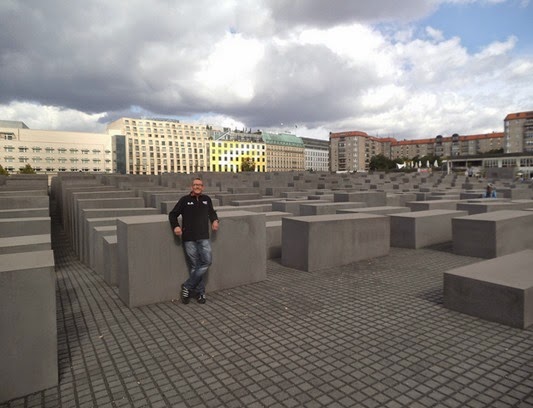 Mike at the Memorial to the Murdered Jews
Mike at the Memorial to the Murdered Jews
We finished our quick walking tour of the German capital at the redeveloped Potsdamer Platz where a section of the Berlin Wall still remains for tourists like us to stand next to and have their photos taken. We however, were far more taken by the impressive Sony Centre, a large circular courtyard with a tent-like roof and glass-covered buildings which reflect the multitude of angles spectacularly. I lay on my back on a bench and photographed and videoed it for it was well worth savouring.
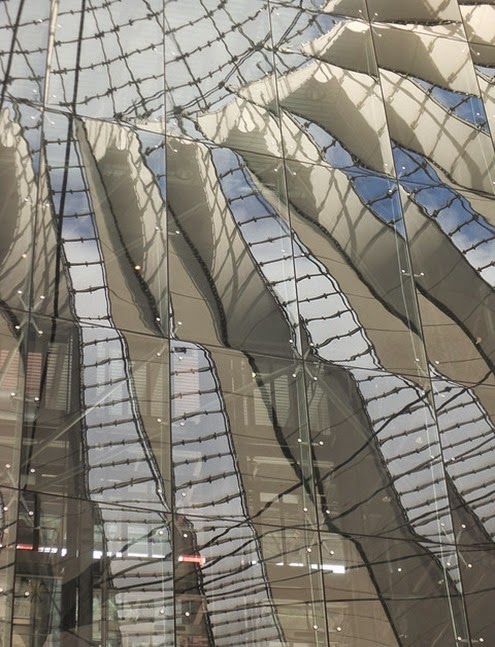 Reflections in the glass, Sony Centre, Potsdamer Platz
Reflections in the glass, Sony Centre, Potsdamer Platz
Our time now limited and our feet sore, we jumped on the U-bahn to make one more stop. Mike had now seen a lot of the old East Berlin but nothing of the West, so we headed over to Kurfürstendamm, once the heart of the old capitalist enclave. To be fair though, the Osters had the best of it for there's not a lot to see save for an impressive array of sex emporia which are always worth a look around if only to broaden the mind – if you can think of it, there's a fetish devoted to it somewhere – before then heading to Kurfürstendamm's main railway station, Zoologischer Garten, in order to purchase our onward tickets to Poznań.
Except that there we hit a problem. On the internet I'd sourced the train times and found there to be one, very conveniently, at 16:29. upon investigation however, it transpired that this train did not in fact, exist: DB had not updated their website since 2009 (how very un-German!). However, there was a train leaving the Hauptbahnhof at 15:37, just half an hour or so away, so we got our tickets and jumped onto the next train up-track to Berlin's new central station.
I'd visited – and been bowled over by – Berlin's new Hauptbahnhof back in 2007. Then it had not just been new, but very new indeed, officially opened only the year before. I'd reached it then by walking across a wasteland of undeveloped real estate lots, the legacy of the area being the no-man's land in-between East and West Berlin during the Cold War. Now most of those lots are filled with towering office blocks and its title of 'Central' seems a little more justified. It is, unlike so many railway stations built since the Second World War, a station worth departing from with its enormous glass overall roof and layers of railways all running on top of one another. Back on my last visit I'd caught a local stopper service for Charlottenburg from there, a journey of only a couple of miles, but today we were doing the grand terminal justice by boarding the international express bound for Gdańsk and our destination – Poznań Główny – was a respectable three hours distant. So, climbing onto the white PNR coach, a currywurst each in hand, we said goodbye to Berlin and looked forwards to pastures new.
The journey to Poznań however, was not quite what I had anticipated. You'd expect Berlin, capital of the most populous and powerful nation in Europe,[1] to be like London and Paris, to be swamped by mile after mile of bland middle-class suburbs. But no, almost as soon as we were out of the centre, we plunged into a vast forest that lasted not only up until the Polish border, but a good way into Poland itself. It was dense and primeval and it made one rethink one's perceptions of Germany as this über-developed people-heavy land. But then again, we often forget that Germany is not like Britain and France just as Berlin is neither Paris nor London. Up until as recent as 1870 the country existed as a concept only and even today – in a process exacerbated by the traumatic post-war split into two states – the country is far less centralised than the other two great European powers. Berlin may be its capital, but the dominant West's government was situated in Bonn until 1990, the industrial powerhouse has always been the distant Rhine-Rühr conurbation, Munich is undoubtedly the boss in the south whilst Frankfurt-am-Main is the financial centre.
We soon passed through Frankfurt, but not the money-drenched one. Frankfurt-an-der-Oder is now the last city in Germany and as we rattled over the Oder River which gives it its name, we passed into Polish territory. However, things have not always been so and traditionally Germany has been more easterly situated than it is today. Prior to 1945, large swathes of what is now Poland was German territory and indeed the Prussian capital Berlin was chosen as the administrative heart of the new German Empire in 1870 primarily because it was geographically at the heart of the new entity. Even a cursory glance at the map today shows us that this is no longer the case. For centuries much of Western Poland has had a large German population and many of its urban centres were Germanised and had German names: Poznań – Posen; Gdańsk – Danzig; Szczecin – Stettin and Wrocław – Breslau. In moves not often talked about but still felt keenly by many Germans, the border was shifted to the Oder giving Poland East Prussia and most of Pomerania and Silesia in compensation for territory that the USSR annexed off it in the east. And with the shift in borders also came a shift in people. By 1950 between twelve and fourteen million ethnic Germans were forcibly uprooted from their homes in Central and Eastern Europe, often places where their families had lived for centuries, and resettled within Germany. The number from Poland alone was seven million. How many were killed in the process is up for debate. There are 473,000 confirmed deaths and some estimates talk of two million although the most accepted seems to be that of the Deutsches Historisches Museum which gives a figure of around 600,000. whatever the truth, one thing is for sure: wandering around the region between Berlin, Kaliningrad, Lvov and Budapest can often be a very sobering experience for much of the literature, art, culture, industry and architecture of those places was the product of two peoples conspicuous by their absence: the Germans and the Jews.[2]
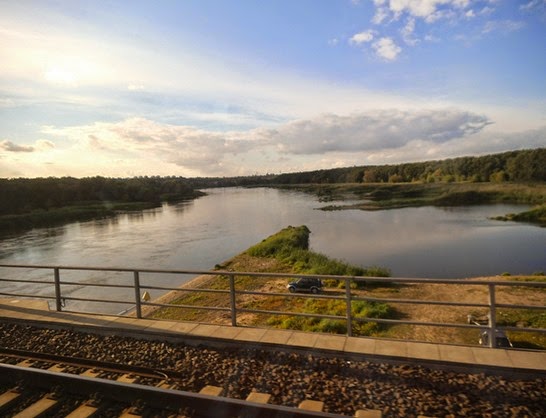 Crossing the Oder, the (present day) border between Germany and Poland
Crossing the Oder, the (present day) border between Germany and Poland
If the journey to Poznań was a little contrary to expectations, the arrival was even more so. We drew into the dingy confines of Główny (Central) Station – as good an example of what modern architecture shouldn't be as Berlin Hauptbahnhof is of what it should – and then made the short walk to our pre-booked accommodation, Pension Xantier (PLN99 p/n). Except that when we rang the bell, there was no answer. So we knocked on the door. Still no answer. So Mike called the number on the booking confirmation. And we heard the phone ringing in the office, but, unsurprisingly, no one picked it up. Stumped, we waited, then we waited some more, then we went to the shop and then we came back to wait some more. And then, just as we were about to leave and seek alternative accommodation, a girl arrived. She didn't speak any English, but was dashed pretty which at least made up for our inconvenience a little. However, she wasn't the owner of the hotel, nor even did she work there. She was, I discovered through the fog of several Slavic tongues, sort-of living in the hotel and sort-of a friend of the guy who sort-of owned it. Nonetheless, all these “sort ofs” equalled one definite which was his mobile number which she duly rang for us and he promised to get down to us prompto and asked if his sort-of live in friend could sort-of open the room up for us. The question was, why hadn't he been there himself?
Hmm... it seems like he'd sort-of closed the hotel for the winter and most definitely forgot that he'd received an internet booking.
And so, after dropping off our bags, we were finally able to start exploring the second of our three cities. We walked into the heart of Poznań as the sun went down and ended up where every tourist does, the breath-taking Stary Rynek (literally “Old market, i.e. the central square), where, ensconced in one of the cobbleside bars, we toasted our return to the Land of the White Eagle, the country which we had enjoyed so much the year before, and then sat back to ogle the stunning mediaeval architecture and the even more captivating Polish women who passed by on their evening strolls.
[1]I exclude Russia and Turkey since they're mostly in Asia.
[2]I explore the subject of Eastern Europe’s missing Germans and their legacy in far more depth in my travelogue 'The Missing Link' where I meet one of the few survivors, Anton Bremer, an ethnic German in Northern Romania.
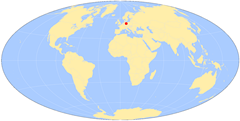
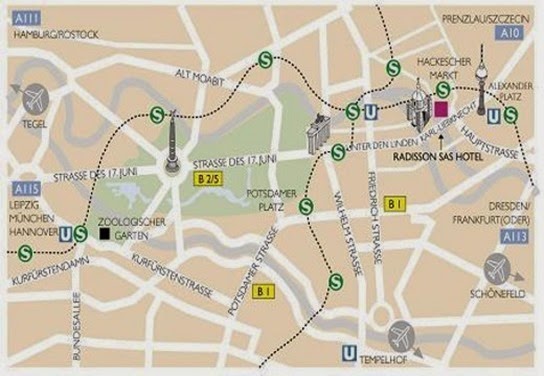
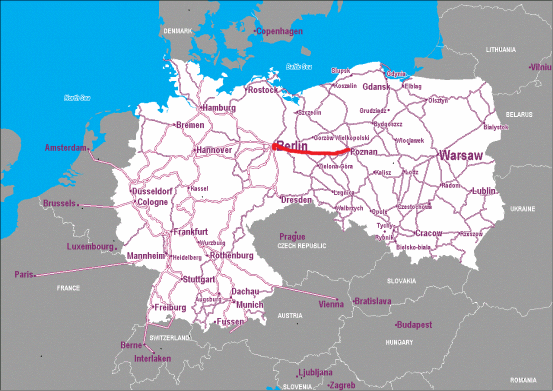
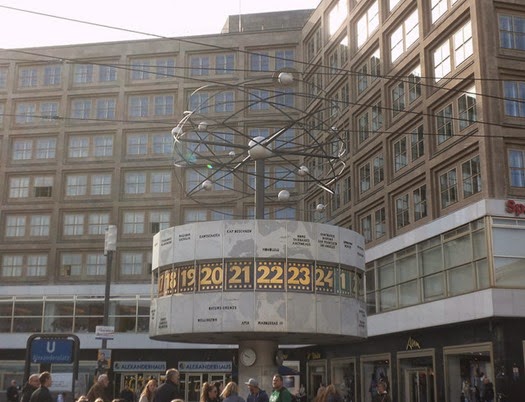
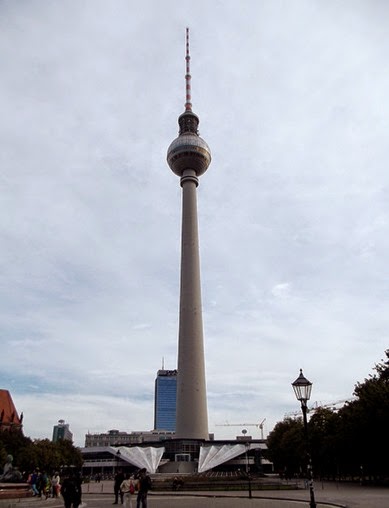
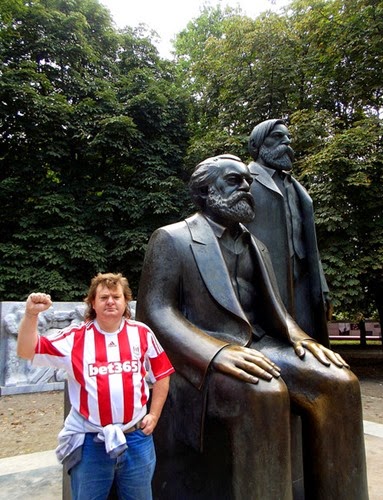
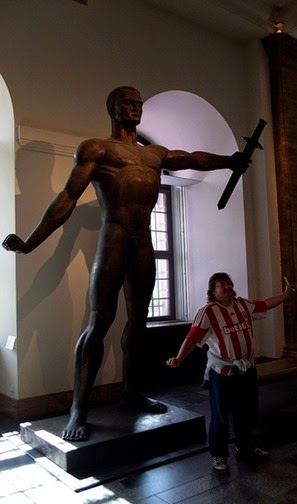
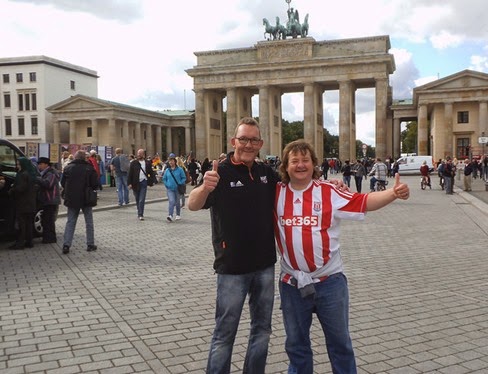
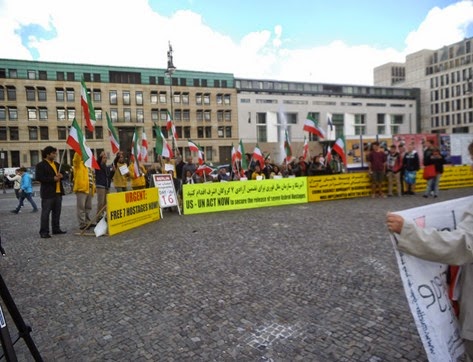
No comments:
Post a Comment